Uncategorized
Top 10 Typography Trends of 2025: Stay Ahead in Digital Design`

Top 10 Typography Trends of 2025: Stay Ahead in Digital Design
Typography trends of 2025 everything from Bad Fonts to Good Fonts is not merely the font that is to be used, it is all about typeface, about feeling, about grabbing attention and about… messaging. In this sense, if design trends continue to change, the typography domain in 2025 will introduce new untapped perspectives as well as different ways of an attractive appearance of digital matters. Here, we look at 10 typography trends that are predicted to dominate the digital design space in the coming year, making it easier for designers to make informed decisions about choosing the right styles for their projects.
1. Dynamic Variable Fonts: Using sports lettering technology, this Design brings Versatility Meets Functionality.
With increasing popularity for more functionality within the digital design sphere, variable fonts are something introduced typography trends of 2025. These fonts come in one typeface as an encouraging factor permitting fonts within a single file to be made lighter, bolder, and even more rigid than other fonts that do not support such flexibility. Standing for WPO, variable fonts cut down the amount of time your web pages take to load and offer both form and function, especially when dealing with multiple designs for the same platform, hence their importance in the construction of flexible digital interfaces.
Why It’s Popular
Typography trends of 2025 dynamic variable fonts are specifically praised for fluidity. And no limits on screen sizes and orientations are applied to them, which will give you an engaging experience when you are using a mobile device, or a tablet, or just a common PC.
Best Use Cases
- Responsive websites
- Interactive applications
- Digital advertisements
2. Minimalist Serif Revival: The combination of Traditional and Contemporary

Clean and elegant typography is enjoyed throughout typography trends of 2025 with the return of minimalism in the context of serif fonts. These fonts have both class and elegance and provide the timeless that may be a point of appeal to modern taste. While traditional serifs are heavy-set, having heavy thick and thin lines, outlines and a lot of embellishments, these contemporary serif texts have comparatively thinner strokes, and fewer deetings, and thus are ideal for a posh look.
Why It’s Popular
Typography trends of 2025 simplicity of the serifs in the choice is in between businesslike and friendly. Because of the refinement without ornamentation, these types are especially suitable for modern identification.
Best Use Cases
- Editorial websites
- Luxury brands
- Corporate presentations
3. Maximalist Typography: Bold, Big, and Beautiful

Of course, minimalism has a point and 2025 is also witnessing the emergence of the maximalist typography. This style uses large and loud fonts which take charge of screen size and demand an instant look. The trend often employs the use of bright colors with objects of irregular shapes and layers giving products lots of character that is easily noticed.
Why It’s Popular
Maximalist typography trends of 2025 is best described as a beloved and preferred concept since everyone loves that which is unconventional and non-conforming to conventional norms. It enables designer to really play with type and make a pretty unique statement just by typing.
Best Use Cases
- Event posters
- Social media graphics
- Landing pages
4. Handwritten and Script Fonts: AEGD: Personal Touch in the Digital Age
To quote UnZipped for typography trends of 2025 A human touch to the digital writing is being incorporated through handwritten and script fonts. Such fonts copy the original essence of handwritten texts and make a design look friendly, familiar, and welcoming. When it comes to brand naming, social media or website designing script fonts help footwear brands create a laid-back attitude.
Why It’s Popular
Typography trends of 2025 thanks to technology, the society became impatient when it comes to real communication. Handwritten fonts are organic and add personality to dull otherwise interfaces, it makes the layout look bespoke.
Best Use Cases
- Personal blogs
- E-commerce sites
- Creative portfolios
5. High-Contrast Fonts: When it comes to writing a scientific paper it is crucial to stay as close to the original purpose and idea as possible while also making sure that the message gets across loud and clear.
Many designers have praised the sharp contrasting fonts and those that have thinner and thicker margins distinguished in a dramatic manner because they offer easy to read characters. By typography trends of 2025, these fonts are popularly used in headings and call to actions since designers want to highlight particular items without the distraction of readability being affected.
Why It’s Popular
Typography trends of 2025 obviously, use of high contrast fonts attract attention and can be used to highlight specific pieces of text without over powering the rest of the remaining content in the webpage. They transpose the chasm between the formal and forceful quite deftly.
Best Use Cases
- Call-to-action buttons
- Headlines on webpages
- Print media
6. Layered and 3D Typography: Adding Depth and Dimension

Layered and 3D typography trends of 2025 is about illusion of depth of the type, as well as making it look more responsive to the viewer. It has become common to see shadows, gradients, layering techniques used on fonts to popping which in essence makes fonts better in the digital space.
Why It’s Popular
Typography trends of 2025 when it comes to VR and AR, 3D and layered typography are necessities which continue to be developed. This trend is manifested in the tendency of spatial web design and introduction of typography to the three-dimensional world.
Best Use Cases
- Virtual reality interfaces
- Gaming websites
- Interactive media
7. Gradient Typography: Vibrant and Eye-Catching

As seen in this article, gradient typography is a trend that will be quite prominent in 2025 because designers want to make the designs ‘pop’ while not overloading them. Gradations retain the two colors and make them run into each other in a subtle way that makes it perfect for digital designs. Together with simple graphic designs, gradient typography trends of 2025 adds an air of newness and contemporariness.
Why It’s Popular
Typography trends of 2025 this kind of gradients allow to make the text look more interesting and add some liveliness to the digital type, at the same time not harming the reader’s eyes with oppressive, bright color concentration.
Best Use Cases
- Technology brands
- Fashion websites
- Landing pages
8. Retro and Vintage Fonts: Nostalgia Meets Innovation
The good old fonts are back, as influenced by font of the seventies, eighties and nineties. Typography trends of 2025 refers to the reminiscence of things by making use of elements that evoke a familiar feeling to people, in the design of digital interfaces. Designers are now reviving these pixel fonts in newer avatars, incorporating them in modern design templates where they can provide a touch of vintage glory with modern designs.
Why It’s Popular
Those audiences who like things old school find the vintage font trend appealing. I think that it is a connection between the Past and the Present and it is a welcome relief when compared to today’s ultra modern styles.• Branding for lifestyle product• Promotion of ‘Throwback’ eventsng Depth and Dimension
Layered and 3D typography is all about creating visual depth and making type appear more interactive and engaging. Designers are utilizing shadows, gradients, and multi-layered effects to make fonts pop, resulting in a more immersive digital experience.
Best Use Cases
- Virtual reality interfaces
- Gaming websites
- Interactive media
9. Outline Fonts: Thin and barely noticeable Design Decision
Outline fonts are where only the outlines of characters are visible and cannot be used in a massive range of different digital designs. In 2025, outline fonts are preferred for the titles and headlines that are required to be less dominating yet provide contrast to structure of web page.
Why It’s Popular
Outline fonts are more contemporary, artistic and at the same time are easier to read than most other fonts. The products themselves – they are thin and glamorous, do not clutter a room decor and can easily fit into minimalist environment.
Best Use Cases
- Fashion websites
- Art galleries
- Modern portfolios
10. Animated Typography: Bringing Text to Life

Animated typography is quickly becoming a favorite as more designers seek dynamic ways to engage audiences. These animations range from subtle fades to elaborate movements, adding an interactive element to web pages and applications. When used thoughtfully, animated text can guide users’ attention and make content more memorable.
Why It’s Popular
Animation in typography trends of 2025 not only captivates viewers but also guides them through content. It’s effective for storytelling and emphasizes key information visually.
Best Use Cases
- Digital storytelling platforms
- Interactive presentations
- Web banners and ads
How Typography Trends in 2025 are Incorporation
Typography trends of 2025 need to be executed with much concern for the brand, the users and usability if they are to be effective. Here are some tips for applying these trends effectively in your design work:
Know Your Brand: Remember, the font should follow the organizational brand: light and friendly or serious and professional. Serif fonts can be more effective for a luxury brand while sans serif can work great for an artistic agency for example.
Prioritize Readability: It is never okay to use flashy or huge fonts if they cannot be easily read by the intended viewers. Due to the great number of different devices with different sizes, it is crucial to check fonts, and how they look on different devices.
Mix and Match Wisely: It is very important to constantly work with different styles of typography because you can achieve a lot in terms of interest or excitement simply by overlaying typography and avoiding the use of too many designs. Compliment the fonts with an outfit so that they do not clash.
Use Animation Sparingly: Typography trends of 2025 is quite popular at the moment; however, the use of this design feature should be moderate in order not to overwhelm users. Use it when giving emphasis on important info.
Conclusion
Typography trends of 2025 are rather versatile and cover such styles as brutalism, futurism, Sinclairism, Organic and Modest. These trends outline the general direction which digital design is going, and show that no matter how it develops, legibility, beauty, and usability are the key principles to consider when choosing fonts. The best possible means of achieving such goals is staying on top of these trends and designing visuals that will engage the audience and enhance the overall user experience.
FAQs
- Variable font: What are they, why are they important?
Open variable fonts are associated with variable font format that enables adjustments of one or many of the features of font such as weight, width, and slant within the same file type. They’re a must in responsive design because they are scalable across the display while offering optimal functionality.
- As much as typography trends are fascinating, with so many and variables, how does one select the right trend for my brand?
Look at the nature of your brand, the targeted clients and the overall goals of the brand. Categorized, minimalist fonts are best used in business-like environment, while the bold, maximalist fonts are best used in artistic environments where a statement is intended to be made.
- Can handwritten fonts be used for any kind of digital design?
These fonts are ideal for use in personal or low profile brands since they do not come close to professional or corporate settings. They add humanity but at the same time can be a source of adversely affecting the readability of big text chunks.
- Does stylised lettering have an impact on the speed of a site?
Absolutely, excessive use of animated features does negatively affect the websites’ usability, particularly, mobile usability. To achieve animation then one should consider using lightweight animations, the use of CSS effects.
- The difference between gradient fonts and regular colored fonts are?
Gradation fonts applies gradients with simple borders, where one color fades smoothly into another by a gradual change of shade. Of course gradients are more alive and dynamic than simple static colors, and they make typography more communicative.
Uncategorized
Best Graphic Arts Tools for Beginners – The Ultimate Guide for 2025

Best Graphic Arts Tools for Beginners – The Ultimate Guide for 2025
With the world of graphic arts tools always changing, starting out can feel very complicated. Newcomers to programming usually face a huge number of options when deciding on tools and platforms. This is why we’ve written this guide to teach you about the top graphic Arts tools for people just starting. Whether you want to become a digital artist, work in social media design or are just interested in making appealing content, you’ll find all the answers you need in this guide.
Graphic arts tools design has become available to anyone who wants to make something creative, with the right tools. Advancements in graphic Arts tools mean that now, you only require basic skills and affordable gear to kick-start your learning. So many options make it difficult to pick the right tool for your tasks. Let’s discuss each element of design in turn.
What Happens When You Use the Wrong Graphic Arts Tools
Great digital artworks are built using the proper tools from graphic arts tools. They act both like software and like tools for creating – your อันวุ่นเวือน, canvas and arena for exploring creativity. Appropriate tools will allow you to achieve your best without facing complicated designs or boundaries.
To help beginners, good graphic Arts tools must be simple to understand, cost little (or nothing) to use and increase in features as you improve. If you spend your time on the wrong tools, you might end up unhappy, tired out and exhausted. For this reason, it’s important to find the right graphic Arts tools right away if you want to succeed in the future.
1. Canva is a Simple Tool for Getting Graphic Art Done in a Short Time
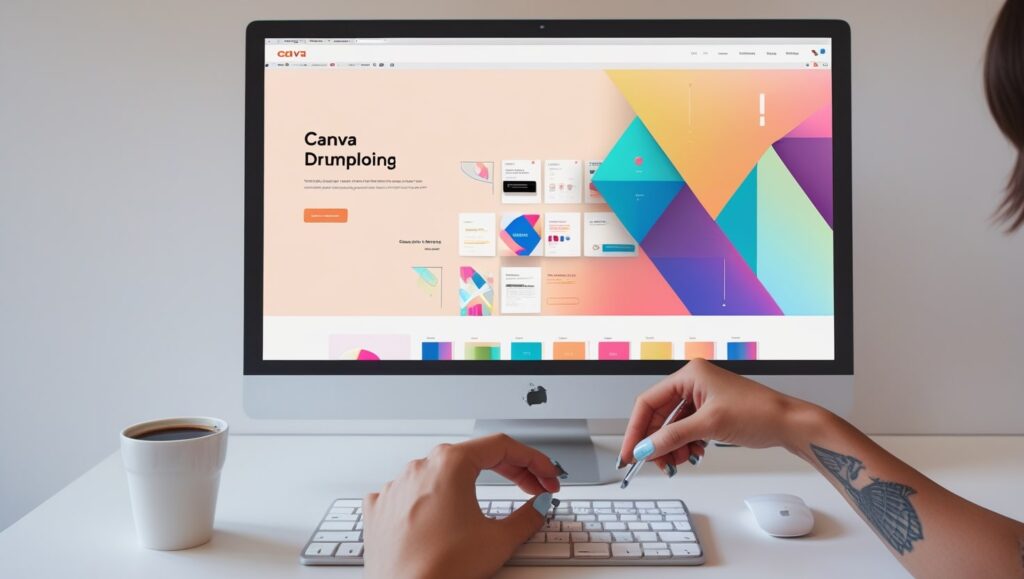
Canva is possibly the simplest graphic Arts tool to use if you’re getting started. With drag and drop, you can easily design attractive websites. You can use Canva’s large selection of templates and graphics for social media, YouTube, business cards and flyers.
The Reasons Canva Is Different:
- You don’t need programming experience to begin
- Thousands of templates are already available for you to use.
- With cloud computing, staff can work together more easily.
- It is perfect for content on social media.
You don’t have to be an expert to make anything on Canva, whether you’re making an Instagram post or a presentation. It’s not necessary to be an expert – just have an idea and click a few buttons.
2. Adobe Photoshop is the most widely used graphic arts tool in the industry.
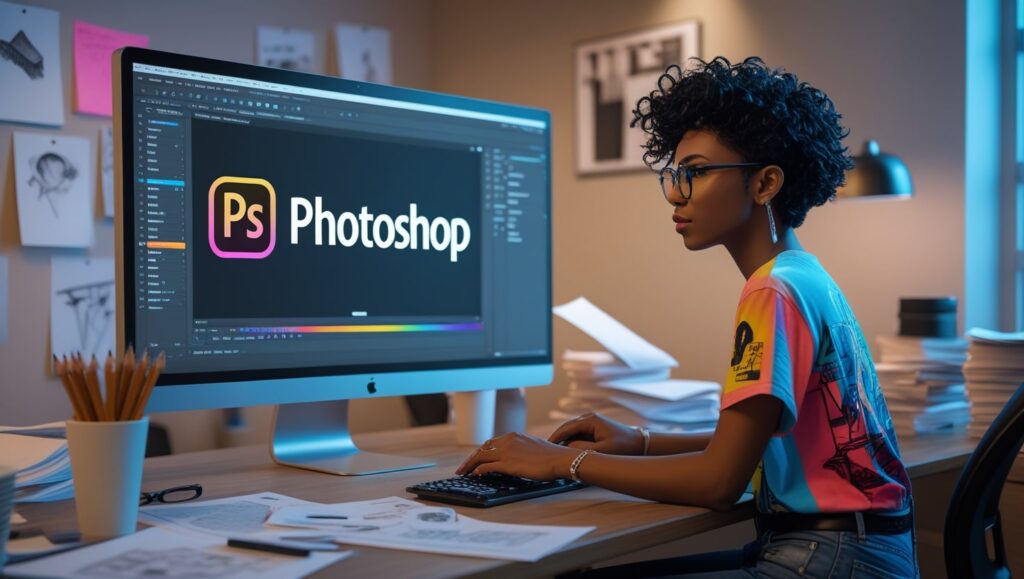
Adobe Photoshop should be included on any list of graphic Arts tools. At first glance, Photoshop looks like it will be difficult to use, but it allows you to do more than any other tool. The use of tablet apps extends from photo editing to digital painting and is valued by countless professionals.
Advantages of Adobe Photoshop:
- All the potential a robot can have
- A great community behind the project
- Regular improvements and additions to the platform
- Has great compatibility with other programs from Adobe.
Those just starting out should focus on learning layers, masks and brushes. You can take advantage of lots of free guides and videos.
3. The Best Vector Graphic Arts Tool Is Adobe Illustrator
Those who design logos, icons and other artwork that can be scaled should use Illustrator as their best vector-based graphic Arts tool. Even though it is included in Adobe’s Creative Cloud, this software is mostly for working on designs without losing their clarity when resizing.
Key Features:
Using a vector”></different styles, fonts and sizes, you can also create different kinds of icon designs.
- Photographic graphic arts tools
- Advanced management of typography is possible.
- Working with Photoshop is made simple.
Although learning Illustrator takes time, it is still one of the leading graphic arts tools for creating vector art.
4. GIMP is an open-source program for graphic design work.
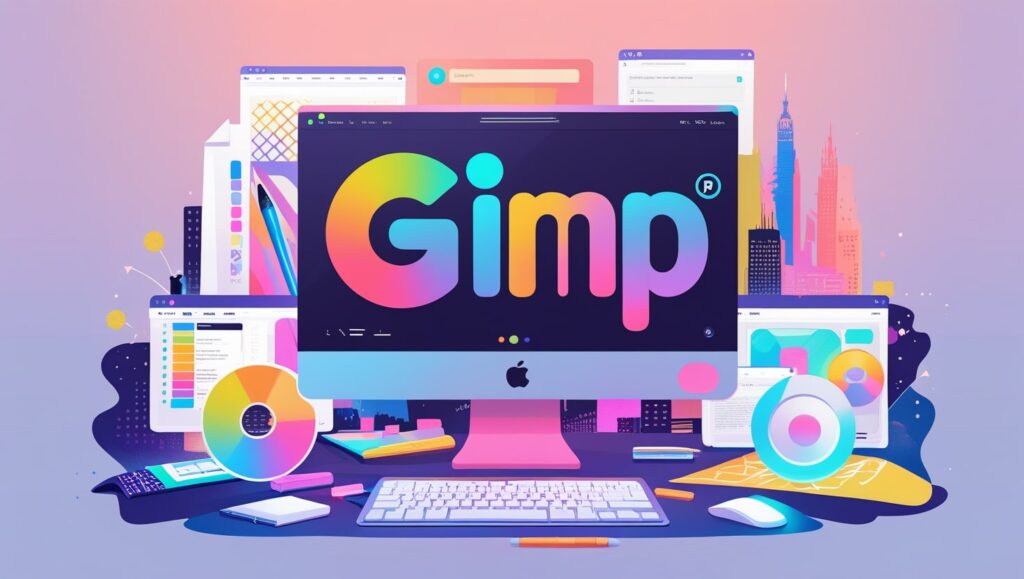
GNU Image Manipulation Program (GIMP) is an excellent alternative to Photoshop and costs nothing. You can customize it how you like and it provides many functions similar to Adobe’s suite.
Why Newcomers May Find GIMP Useful.
- This app is available for free to use at any time.
- Community plugins and support are available in large numbers.
- The interface for Cleanzai is like Photoshop’s UI.
- It is compatible with every major type of operating system.
If you’re looking for powerful editing options and don’t want to spend much, GIMP is the answer.
5. Digital Artists Should Look to Procreate for the Power of the iPad
Procreate is a graphic arts tools created just for the iPad. Procreate provides a great way for beginners to use an Apple Pencil on a tablet.
Top Benefits Offered by Procreate:
- Smooth and fast sketching technology
- Control system that’s simple to use
- You simply have to pay once, then you own it.
- You are provided with many options to customize your brushes.
Many artists choose Procreate for everything they make such as comics and digital paintings. It’s a great fit for people just starting out with hand-drawn art.
6. The Software Krita is a Great Choice for New Artists
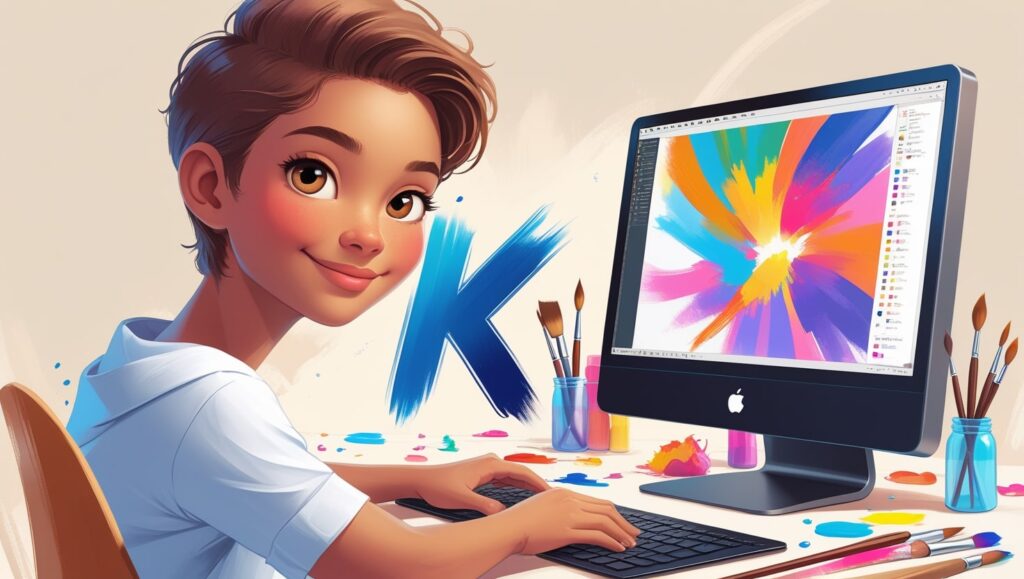
You won’t find professional drawing tools this good anywhere and they cost you nothing. Illustrators, comic book makers and concept artists find it extremely helpful.
What Makes Krita Stand Out
- Creators were the main focus in the design.
- You can fully customize all the brush tools in Photoshop.
- Animation elements are used in style.
- There are no charges for using it
You can use this graphic arts tools whether you are a professional or just starting out.
7. Affinity Designer is a Cheap Adobe Alternative
Affinity Designer is becoming popular because it provides quality tools at a cost that users only pay once. Its versatility comes from being able to do both vector and raster tasks.
Best Features:
- Prices that fit your budget
- A UI that moves quickly and is easy to use
- Frequent updates
- You can use it on macOS, Windows and iPad.
If you aren’t familiar with graphic design and don’t have an Adobe subscription, Affinity Designer is a great option.
8. The Graphic Arts field has CorelDRAW as its long-time expert.
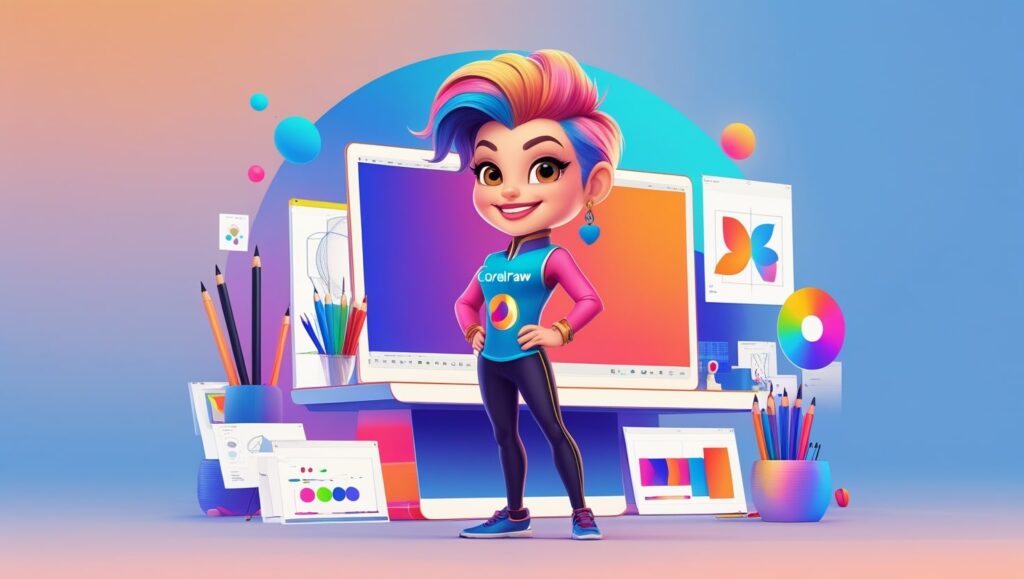
The design industry recognizes CorelDRAW as being among the oldest. With every update, it has advanced to offer a complete suite of graphic Arts tools for all users.
The main reasons to work with CorelDRAW are listed below.
- Easy to use training process
- Advanced ways to design with vectors
- Online hands-on work and tutorials
- More community involvement
No other graphic tool matches the powerful position of lettering in print and on signs.
9. Pixlr – A simple and online graphic tool.
If you’re new to photo editing and don’t want to put software on your machine, Pixlr is a good choice. It works fast, is easy to use and includes tools that are strong enough for most people.
Why Pixlr is a Good Choice:
- You don’t need to install anything to use it
- Easy and organized layout
- All your data and files can be stored in the cloud.
- Tools that use AI
When making quick changes, Pixlr is a favorite online program for graphic Arts.
10. Inkscape provides all its functions for free as a vector graphic software.
Making scalable objects such as logos and banners is easy with the open-source application called Inkscape.
Important Features:
- Impressive SVG support
- It won’t be difficult for anyone just starting.
- There is an active group of developers involved in development.
- Free and available to access without payment
This is a preferred graphic Arts application for those creating vector graphics with limited spending power.
How to Choose Graphic Arts Tools As You Start
If you are starting out in graphic Arts, consider a few important points when picking tools.
- A user-friendly interface makes it simple to understand what’s happening.
- When community participation grows, there will be an increase in tutorials and solutions from users.
- You should begin with programs that don’t cost you anything or are not very expensive.
- Use Pocket on any device, anywhere you like.
- Try a tool that matches your learning process so you don’t feel overwhelmed.
All the graphic Arts tools discussed are particularly good in these areas which is why they are suited for new designers.
Use Free Online Resources to Better Your Learning

Use your graphic Arts tools together with online tutorials, courses and YouTube tutorials. Skillshare, Coursera and Udemy provide clear guidance on the majority of the tools discussed here.
With your graphic Arts tools becoming familiar, you are ready to experience advanced features, for instance, vector tracing, 3D rendering and animation. There is so much we can do with photography.
An overview of the top essential tools for starting in graphic arts
- Which tools should you start with if you’re just starting with graphic Art?
A simple way to edit graphics is with Canva, Pixlr or GIMP. With these tools, you don’t need to know anything about design before you begin creating.
- Are there free solutions available for graphic Arts?
Yes! For those looking for free graphic Arts tools, GIMP, Krita, Inkscape and Canva (no subscription required) are your best options.
- Which is the most effective graphic arts tool for doing digital painting?
Digital painting works best with Procreate and Krita as the tools. Both include a variety of paint brushes and respond very smoothly to touch.
- Is it possible to use graphic arts tools if I don’t have a graphic tablet?
Absolutely. Most of these tools are made for use with the mouse and keyboard, yet using a tablet can make your drawings easier.
- How much time does it take to learn graphic Arts tools?
It will be successful if you are dedicated. Practice regularly and you could become good at basic design within the first three months. Some features in advanced traffic speeds may take more time.
The Most Effective Graphic Arts Tools Lie Readily at Your Fingertips
Getting started with graphic design is easy and doesn’t have to be difficult. In 2025, people just learning graphic arts tools have a lot more options for creating, learning and sharing their work. People who enjoy working with raster, vector or AI in design will find options that suit them well.
Use different graphic arts tools to find the one that suits your style. Many tools allow users to test them for free, so don’t hesitate and explore what’s out there. Keep in mind, the software is only useful if you use your imagination.
Go for the graphic arts tools that fits your creative work the best. You are starting your artistic journey today.
Graphics Design
Canva vs Adobe Photoshop – Which One is Better for Designers?

Canva vs Adobe Photoshop – Which One is Better for Designers?
Designers today have wide-ranging tool options to create beautiful visual content because of the digital era. The design tools Canva vs Adobe Photoshop are the leading choices among all available options. All designers including novices and professionals seeking marketing content for their business must answer this pressing question: Canva offers better design solutions than Adobe Photoshop. You will understand better which tool satisfies your design requirements most by studying a comprehensive analysis between these two applications.
The decision between Canva vs Adobe Photoshop exceeds tool selection as it provides an opportunity to select your creative collaboration mode. Your design requirements along with skill level and design goals help determine whether Canva or Adobe Photoshop stands as the more suitable tool for your project. We will analyze all key aspects of Canva and Adobe Photoshop throughout this article through individual assessments of uniqueness and comparative breakdowns of features and usability alongside price structures and performance indicators.
The Origins of Canva vs Adobe Photoshop
The historical development of Canva vs Adobe Photoshop explains their contrasting features in modern times. Adobe Photoshop obtained its professional industry status immediately following its 1990 debut from creators Thomas and John Knoll. This platform functions as a comprehensive tool which provides users access to capabilities that span from picture handling to illustration creation and three-dimensional work and novice video modification.
Canva launched in 2012 as a user-friendly design platform which Melaine Perkins, Cliff Obrecht and Cameron Adams established to provide design access to all types of users. The web-based Canva platform made design accessible to users with no design experience who created professional-quality social media pictures along with marketing presentations without prior training. The comparison between Canva vs Adobe Photoshop needs to start from the basic understanding that these software tools arose to solve separate problems.
Ease of Use: Canva vs Adobe Photoshop

Anticipant differences exist between Canva and Adobe Photoshop because of their respective user-friendliness. The user interface of Canva has become famous because of its straightforward nature which users appreciate. Drag-and-drop operations simplify every task while new users can generate attractive designs in under minutes. The design process becomes simple because Canva provides users a diverse collection of templates and elements and fonts in its design arsenal.
Adobe Photoshop delivers extensive power through its features at the cost of steep learning complexity. To learn Photoshop completely one needs both significant amounts of practice and professional education and plenty of patience. Adobe Photoshop stands out with its high complexity level that delivers spectacular results but poses a remarkable challenge to new users. Ease of use between Canva and Adobe Photoshop determines the outcomes of the comparison particularly for novice users who require quick professional designs without demanding extensive training.
Users will experience different levels of design flexibility when examining Canva versus Adobe Photoshop
The discussion concerning Canva versus Adobe Photoshop includes flexibility as a core consideration. Due to its web application structure Canva enables users to modify pictures while adding text and filters and producing layouts without difficulty. However, Canva does have limitations. The design editing options in Canva remain simple compared to Photoshop and the application falls short of executing complex photo processing or manipulating numerous images or operating in three-dimensional space.
Adobe Photoshop, on the other hand, offers unmatched design flexibility. Photoshop delivers the best solution for users who want to modify pixel details and create realistic composites together with advanced capabilities that include masks and brushes and layers tools. Among Canva and Adobe Photoshop for design purposes total freedom comes exclusively from Adobe Photoshop.
In comparison to Adobe Photoshop Canva provides its services at different pricing levels.
Budget become a main factor in selecting between Canva and Adobe Photoshop. Canva offers a freemium model. Canva users get free access to a vast template collection along with fundamental design capabilities through its basic free version. The Canva Pro offering with brand kits, premium templates and expanded cloud storage functions can be accessed through a reasonable monthly or annual subscription.
The premium software product belongs to Adobe Photoshop. The Creative Cloud subscription model through Adobe costs in excess of what users pay for Canva premium options. Despite its cost, professional designers accept the price because Photoshop provides complete creative control as well as extensive features. The price of your subscription along with your feature requirements will dominate your choice between Canva and Adobe Photoshop.
An Evaluation of Characteristics Between Canva and Adobe Photoshop

The main overlap between Canva and Adobe Photoshop centers on the different features they provide.
Canva Features:
- Drag-and-drop interface
- Pre-designed templates
- Stock images and elements
- Animation tools
- Collaborative design
- Simple photo editing
Adobe Photoshop Features:
- Advanced photo manipulation
- Extensive layer control
- Professional typography tools
- 3D design capabilities
- Animation and video editing
Users maintain complete authority to edit color tones alongside performing complete retouching operations.
Collaboration Tools: Canva vs Adobe Photoshop

Comparing collaboration tools stands as an additional critical factor when choosing between Canva and Adobe Photoshop. Canva shines in collaboration. Real-time collaborative editing is available on Canva through which team members can comment on designs and work together at the same time. The feature proves extremely beneficial to marketing groups along with social media managers who require continuous brand consistency.
Photoshop supports collaborative work to some extent but it did not receive development as a tool designed for joint real-time editing between teams. Adobe requires extra steps through cloud documents to achieve real-time collaboration because their features remain inferior to Canva’s integrated capabilities.
When teamwork stands as your main requirement Adobe Photoshop meets with defeat in the Canva vs Adobe Photoshop contest.
Templates and Resources: Canva vs Adobe Photoshop

The comparison between Canva and Adobe Photoshop often focuses on templates as one of the significant factors. Canva includes an extensive collection of ready-made templates that cover Instagram posts and business cards among other items. People who want quick designs without initial building operations gain substantial benefits through this tool.
In the template department Photoshop shows a unique approach when compared to Canva. Advanced users tend to use intricate templates in their work. A design newcomer will most likely choose Canva as their tool in this Canva vs Adobe Photoshop battle due to its simple approach.
Offline Accessibility: Canva vs Adobe Photoshop

When it comes to accessing content offline these two applications follow different protocols within the Canva vs Adobe Photoshop comparison. The main operating basis for Canva exists as a cloud-based system. The complete features of the program demand an active internet connection when using its desktop application.
As a primarily desktop-focused program Photoshop operates without requiring any internet connection. Operating without internet makes editing your projects possible since these applications do not require a connection to work. This feature benefits users in remote locations. The offline usability advantage belongs to Photoshop as it stands against Canva in this comparison.
Collaboration Tools: Canva vs Adobe Photoshop
Comparing collaboration tools stands as an additional critical factor when choosing between Canva and Adobe Photoshop. Canva shines in collaboration. Real-time collaborative editing is available on Canva through which team members can comment on designs and work together at the same time. The feature proves extremely beneficial to marketing groups along with social media managers who require continuous brand consistency.
Photoshop supports collaborative work to some extent but it did not receive development as a tool designed for joint real-time editing between teams. Adobe requires extra steps through cloud documents to achieve real-time collaboration because their features remain inferior to Canva’s integrated capabilities.
When teamwork stands as your main requirement Adobe Photoshop meets with defeat in the Canva vs Adobe Photoshop contest.
FAQs About Canva vs Adobe Photoshop
- Intending to start with digital design would Canva or Adobe Photoshop provide the most suitable option?
When it comes to designing for novices the decision must be Canva because it stands above Adobe Photoshop. Everything about Canva is designed for accessibility through a simple interface combined with templates and easy-to-use drag-and-drop features.
- Regarding free use between Canva and Adobe Photoshop is Canva completely cost-free.
Canva provides users with a free version of the tool but Adobe Photoshop demands subscription-based access. Many users choose Canva over Adobe Photoshop because of its free version along with other deciding factors.
- Can Canva replace Photoshop?
The design requirements that fall within the basic or moderate category can be fulfilled through Canva instead of Photoshop. When dealing with professional detailed design requirements users still need to depend on Adobe Photoshop. The outcome of the Canva vs Adobe Photoshop analysis depends completely on your particular design requirements.
- The decision remains between Canva or Adobe Photoshop regarding their suitability as professional graphic design tools.
Complex professional projects require the use of Photoshop over Canva as the more suitable design tool. Adobe Photoshop offers exceeds Canva in terms of capability when creating advanced design products according to the Canva vs Adobe Photoshop comparison frame.
- The commercial utilization of Canva designs remains possible for users.
Change the third person verbalization to first person when possible. Users with Pro accounts can use Canva designs commercially. Always refer to licensing terms as you evaluate commercial purposes between Canva and Adobe Photoshop.
Conclusion: Canva vs Adobe Photoshop – Which One Wins?
The selection between Canva vs Adobe Photoshop depends solely on individual purposes. Social media users and marketers and personal creators should pick Canva because it enables them to create fast attractive designs for their projects. It’s quick, easy, and affordable. The professional designer seeking absolute control and maximum power should select Adobe Photoshop.
Different creative needs require different tools since one tool does not necessarily replace the other. Therefore the best decision might include using both tools simultaneously. Designers frequently choose to take advantage of both Canva and Photoshop services to achieve fast Canva workflow combined with Photoshop’s refined outcomes.
When evaluating the match between Canva and Adobe Photoshop you should select the tool that aligns with your artful tastes and project specifications combined with financial resources.
Graphics Design
42.Crafting Engaging Social Media Graphics A Visual Guide for Success

Crafting Engaging Social Media Graphics A Visual Guide for Success
Crafting engaging social media graphics a visual guide for success has emerged as a viable means through which several businesses, influencers, and people interact and share various content in the current world. In this ocean of content, readability remains important, but so does the ability to be special. Graphics that are usually included in social platforms, utilized as a primary means of attracting attention and presenting messages as well as stimulating certain reactions from viewers. The development of effective social media graphics and strategy: this article will focus on the most important aspects that may help to create eye-catching graphics for your page and find the interest in the audience.
1. The Need to Have Social Media Graphics

Crafting engaging social media graphics a visual guide for success visuals are received 60,000 times faster than text and are thus significant for social media marketing. However, due to the short time people can still invest in something, people read feeds very fast. Brightening up your site graphics can make the site visitors stop to read the content you wish them to read.
Furthermore, most of today’s networking sites like Instagram, Facebook, Twitter, and Pinterest are image-based networks where pictures take the frontline of information. Effective graphics can:
– Increase brand awareness
– Enhance user engagement
– Transmit communication as expeditiously as possible and with as little ambiguity as is realistically possible.
– Improve content shareability
Even if the information provided is worth people’s attention, it might be concealed by a poor graphical design in the context of social networks.
2. Features of Various Social Media Graphics

Crafting engaging social media graphics a visual guide for success every channel has its proper structure and appropriate manner of placing information and various types of materials. It will be easier to make optimized content for these platforms once you understand all the differences between using a blog and a website. Here are some of the common types of social media graphics:Here are some of the common types of social media graphics:
Post Graphics: Crafting engaging social media graphics a visual guide for succesthese are images for every typical post that one uploads on Instagram, Facebook, or even Tweeter. It can be promotional material, quotes or even pieces of information presented in the form of an image.
Cover Images: These platforms include, but not limited to, the Facebook, twitter and linked in user accounts enable users to upload cover pictures. These large pennants are perfect for illustrating its branding or a unique message.
Stories: Crafting engaging social media graphics a visual guide for success a life photo or video that can be created on Instagram, Facebook, and Snapchat that is oriented in the vertical direction and has low duration. There is a great opportunity to get into discussion with the readers by means of telling stories.
Infographics: Infographics are used to enhance the presentation of data using design elements with which the data is then presented. HLG does best in sites such as Pinterest and LinkedIn where informative content is likely to find a good reception.
Carousels and Slideshows: Crafting engaging social media graphics a visual guide for success these are a set of images uploaded in a single post such that the user has to swipe through to view all the images. More so, carousels are ideal to use when engaged in storytelling, creating a tutorial, or displaying products.
3. Stakeholders and the Basic Components of Social Media Graphics

Designing interesting crafting engaging social media graphics a visual guide for success involves both art and science, as well as write and wrong approaches. Here are the essential elements to consider:Here are the essential elements to consider:
a. Brand Consistency
Crafting engaging social media graphics a visual guide for success that are set on the social media platforms should be in cohesion with your brand. This includes ensuring that one uses the common color of prints, fonts and logos in the various internet tools. Uniformity in presentation allows your target customers to distinguish your work, and become acquainted with it.
Colors: Select the color range which fits the character of your brand. For example the use of the bright colors can be related to dynamic and energetic brand image while the use of low-intensity colors may be related to serious, business-oriented brand image.
Fonts: To avoid case of boring and tiredness, use one or two fonts that are easy to read. Don’t use highly ornate fonts that can detract from the information that is being conveyed.
Logos: Place your logo within the set and ensure it merges well within the graphics so as to constantly remind one of the brand without becoming obtrusive.
b. Visual Hierarchy
Crafting engaging social media graphics a visual guide for success the organization of the design in a sequential manner to control the viewer’s attention to the arranged order. If organization is achieved in the hierarchical manner then the important information does not get lost among the rest of the data. Key elements include:
Headlines: This combines with the use of bright and large fonts to ensure that headlines are the main focus of the graphic.
Subheadings: They should be slightly less in size compared to the headline but big enough to direct the attention of the viewers to small additional information.
Imagery: Select images of good quality and that are related to the message being passed. Do not overload the imagery because it negatively impacts the audience’s ability to understand it.
c. Clarity and Simplicity
The best crafting engaging social media graphics a visual guide for success that may be used in social media are the ones that can be easily interpreted as soon as one looks at them. Time is a scarce resource and so people’s ability to focus on lengthy content in microblogs is very minimal. Here are a few tips for achieving clarity:Here are a few tips for achieving clarity:
Limit Text: Text shall be brief but shall contain all the necessary information. Instead of using as many words as possible to Narrate the story, use graphics to do so.
Whitespace: Do not be scared of any free space. It also helps to make the design less so that it is not filled with too much nonsense, making it look more fresh.
Focus on a Single Message: Crafting engaging social media graphics a visual guide for success there should not be more than one major concept that should be expressed in each of the graphics. However, if the amount of information given is too much within one image then the effectiveness of the message gets reduced.
d. Tenacity/Perseveration & Appeal to emotions
Twitter, the microblogging site also being a social media, is all about interactions and controversies; people give more value to pictures that share feelings. Emotional appeal can be achieved through:Emotional appeal can be achieved through:
Storytelling: Crafting engaging social media graphics a visual guide for success should be used to express a story or a process. People love the element of stories behind products; they are likely to pay more attention to stories than on mere products.
Relatability: Your designs should capture your target group’s interests, beliefs, and perceptions in relation to a particular issue. People will tend to share and like materials that they can easily connect with or perhaps that which reflects part of them.
Call to Action (CTA): Use prominent CTAs to make the viewers act with special emphasis on branding and positioning. From clicking a link to sharing the post or even commenting on it, a well placed CTA will definitely call for such an action.
4. A Guide to Best Social Media Graphics Designing Tools and Solutions

Crafting engaging social media graphics a visual guide for success stunning social media graphics does not need to be a costly affair through expensive graphic design tools. There are many tools offered on the market, for novice and professional users. Here are some popular options:Here are some popular options:
Canva: Canva is a simple crafting engaging social media graphics a visual guide for success to navigate cloud based application that offers a huge variety of templates, icons and images. It is especially good for novices and people, who require clean and professional layouts in a short time with no additional tutorials.
Adobe Creative Cloud: If you want level up your designing skills, Adobe is the best software offering flexibility and tools such as photoshop illustrator and indesign.
Figma: Crafting engaging social media graphics a visual guide for success defined as an application which permits multiple people to contribute in the design process of an item or an object at the same time. It is a perfect tool for designing simple and complex static designs as well as designing animations.
Piktochart: Especially designed for the construction of infographics, Piktochart offers the possibility to recreate data into great visuals quite smoothly.
Unsplash and Pexels: These services offer a user with high quality, copyright free images that you can use in your designs.
5. Platform-Specific Best Practices

Crafting engaging social media graphics a visual guide for success necessary to understand that one cannot employ the same strategies in all social media platforms so as to boost the impact of graphics. Below are some tips for optimizing graphics across various platforms:Below are some tips for optimizing graphics across various platforms:
a. Instagram
Aspect Ratio: For feed the optimal size is 1:1 or square and stories are in 9:16 vertical format. Instagram also allows carousel post, in which one can share several images at once in one single post.
High-Quality Images: Crafting engaging social media graphics a visual guide for success extremely important to emphasise the fact that Instagram is very visual, so the images used should be of great quality.
Hashtags and Captions: As added advantage, make sure to incorporate proper hashtagging as well as colorful captions that helps in popularizing the graphics.
b. Facebook
Cover Photos: Crafting engaging social media graphics a visual guide for success recommended size of the Facebook cover photo is 820 pixels wide by 312 pixels tall and it is recommended that an image is optimized to show well both on the desktop and on the mobile news feed. This is the perfect opportunity to state your brand in a way that will make people stop and pay attention.
Shared Links: In general if a link is shared in the facebook page it automatically creates a preview image of the link. Check that the highlighted image of your website or blog is sharing-friendly.
Event Banners: Facebook events enable their organizers to add a banner; please ensure that you create a good graphic that will publicize the event .
c. Twitter
Visuals with Tweets: Crafting engaging social media graphics a visual guide for success it was also identified that tweets that contain images/videos attached commands a significantly higher level of engagement as compared to simple text tweets. When is comes to the images, Twitter has the capability of displaying images in a horizontal and a square manners.
Header Images: Header images in Twitter are relatively big; that is, 1500 x 500 pixels and the image should reflect your brand or the current campaign you are running.
Infographics and Statistics: Twitter is ideal for sharing short and simple information in the form of images: infographics or statistics.
d. LinkedIn
Professionalism: Crafting engaging social media graphics a visual guide for success being aware that LinkedIn is a more corporate oriented platform, your graphics should not be too casual having in mind the nature of this web site. Its important that the designs are clean, simple, and have a lot of white space.
Banners and Backgrounds: LinkedIn account provides options of using a banner and background to publicize your brand or portfolio.
Infographics and Data-Driven Content: This means that LinkedIn users are more receptive to knowledge-based content and therefore, they respond well to infographics and other visual reports.
e. Pinterest
Vertical Images: Pinterest prefer tall images with the side ratio 2:3 (for instance 1000 pixels by 1500). Again, based on frequency of use vertical pins are likely to be distinctive in the users’ feed list.
Infographics and Step-by-Step Guides: As for what Pinterest concept is good for, it will certainly suit educating materials, do it yourself guides, and infographics. Children also feel that visual guides are often pinned on the boards as well as shared more often.
Keywords and Descriptions: Crafting engaging social media graphics a visual guide for success make sure you have a text description to each pin you make and incorporate keywords to these descriptions.
6. Trends of Social Media Graphics
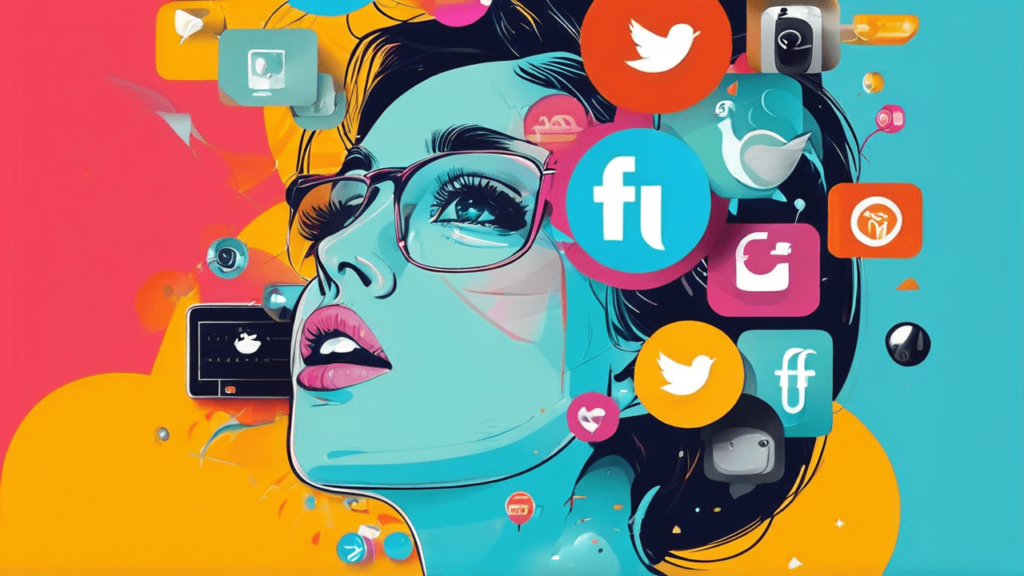
Crafting engaging social media graphics a visual guide for success it is important for one to understand that social media graphics is a dynamic area that is subjected to changes now and then. This is important because keeping up with the current trends will not only keep the created content new. Here are some current trends in social media design:Here are some current trends in social media design:
Minimalism: Crafting engaging social media graphics a visual guide for success currently, people are going for minimal and space designs with minimal hangings on the walls. The use of simple design gives life to the message while at the same time keeping the message clear and easily understandable without the necessity of a complicated background landscape.
Bold Typography: Frequency-driven type treatments that involve the use of big fonts that largely appear in a design are a trend that is likely not to fade away. With small images used in the design, it is easy to understand that extreme contrast is identified with impact, and it does not require many illustrations to emphasize on the bigness of the text.
Animated Graphics: Crafting engaging social media graphics a visual guide for success more frequently, people employ motion graphics and GIFs in order to attract the audience’s attention and to make the content more engaging. Currently, IGTV and Facebook allow short videos and animations in the feed, which create a great opportunity to be seen.
Authentic Imagery: What was once neatly stacked on the shelves as idealized pixilated imagery is now being FAUNTAZIZED by real-life, everyday realistic – realistic images. Receiving positive audiences’ reactions, it can be stated that the viewers prefer the authentic and close-to-life images.
Interactive Content: Crafting engaging social media graphics a visual guide for success carousels, quizzes, and clickable images make the reader interact with your content in a more interesting way. Animated posts make your audience spend more time on your posts and engage with the content.
7. Four Metrics for Evaluating Your Social Media Graphics
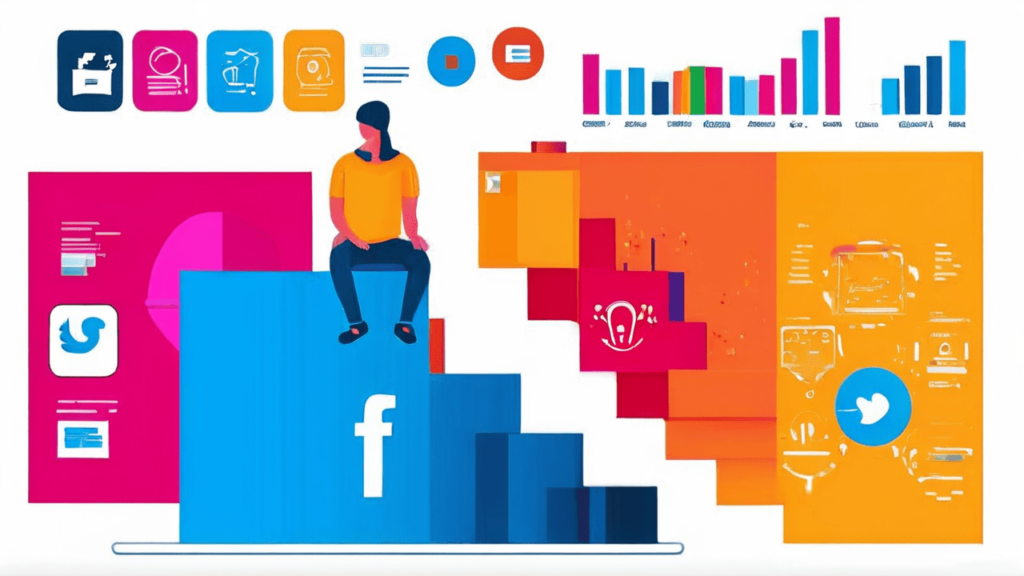
When your graphics are out there, it becomes very important to monitor
Crafting engaging social media graphics a visual guide for success after the observational data has been collected it will be useful in recreating the scenario and fine tuning the strategy and future designs. Here are some key metrics to monitor:Here are some key metrics to monitor:
Engagement Rates: Like and comment rates, share frequency, and retweets are some of the measures of show how your content is appreciated.
Reach and Impressions: Crafting engaging social media graphics a visual guide for success these metrics guide you that many people have seen your content. It is self-explanatory as a higher reach just means that your graphics are getting out to more people.
Click-Through Rates (CTR): If the graphics you used have a ‘Call to action’ such as a clickable link to your website, observation of CTR will indicate the persuasiveness of the graphic in the conversion process.
Conversion Rates: Finally, in any case, the effectiveness of your social media graphics should be determined by the result that you need – be it leads or sales, brand recognition, or any other.
Conclusion
Crafting engaging social media graphics a visual guide for success are a very strong influential marketing strategy when it comes to digital marketing. When you know the nature of your audience, follow brand identity guidelines, and know what is current in the field of design, you can produce images that will not only attract people’s attention but will also inspire them to act. Regardless of whether you are a businessperson, marketer or an influencer, it is critical to show quality graphics in the social channels, given that competition in the social media domain continues to surge.
-

 Graphics Design1 year ago
Graphics Design1 year ago7.Exploring the Importance of Color Theory Charts
-

 Graphics Design10 months ago
Graphics Design10 months ago10 Stunning Gradient Design Trends You Need to Know in 2024
-

 Graphics Design1 year ago
Graphics Design1 year ago15.The Importance of Effective Flyer Design in Marketing
-

 Graphics Design1 year ago
Graphics Design1 year ago14.Mastering the Art of Print Design: Tips and Tricks
-
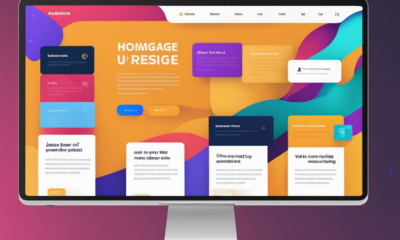
 Graphics Design1 year ago
Graphics Design1 year ago10.The Latest Trends in Web Design and Development
-

 Graphics Design1 year ago
Graphics Design1 year ago29.Retro Design Is Making a Comeback in Modern Spaces
-
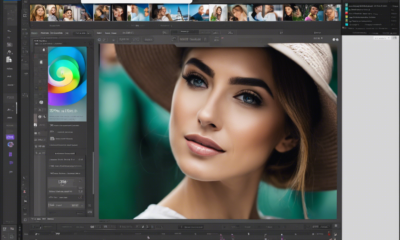
 Graphics Design1 year ago
Graphics Design1 year ago13.Exploring the Latest Trends in Photo Editing Software
-
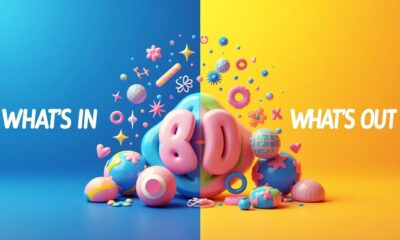
 Graphics Design5 months ago
Graphics Design5 months ago2025 Logo Design Trends: What’s In, What’s Out?





Levent su kaçağı tespiti
November 10, 2024 at 6:45 pm
Levent su kaçağı tespiti Gaziosmanpaşa su kaçağı tespiti: Gaziosmanpaşa’da su kaçaklarını modern cihazlarla tespit ediyoruz. http://storytellerspotlight.com/ustaelektrikci
temp mail
November 12, 2024 at 6:34 pm
“Such a refreshing read! 💯 Your thorough approach and expert insights have made this topic so much clearer. Thank you for putting together such a comprehensive guide.”
معدات وزن الشاحنات العراق
December 5, 2024 at 6:33 pm
Revolutionize your weighing needs with BWER, Iraq’s top provider of weighbridge systems, featuring unparalleled accuracy, durability, and expert installation services.